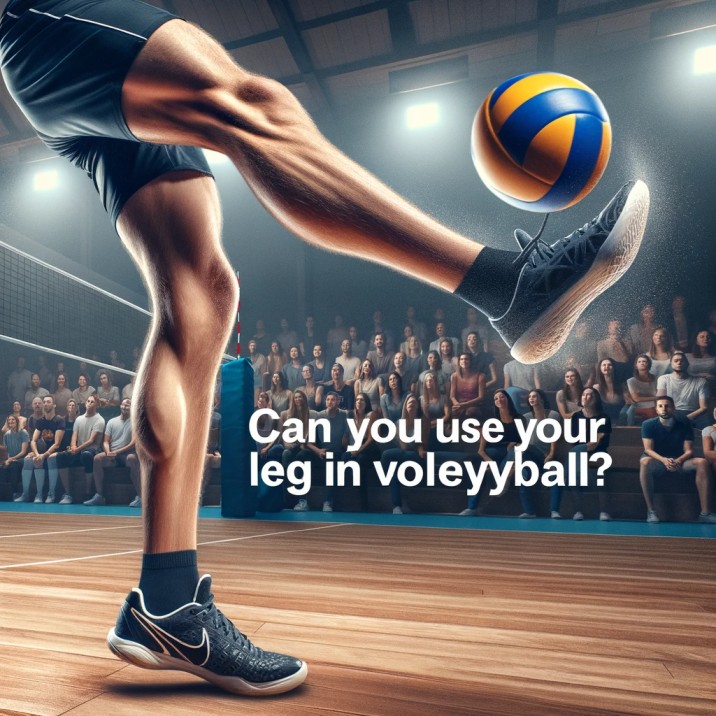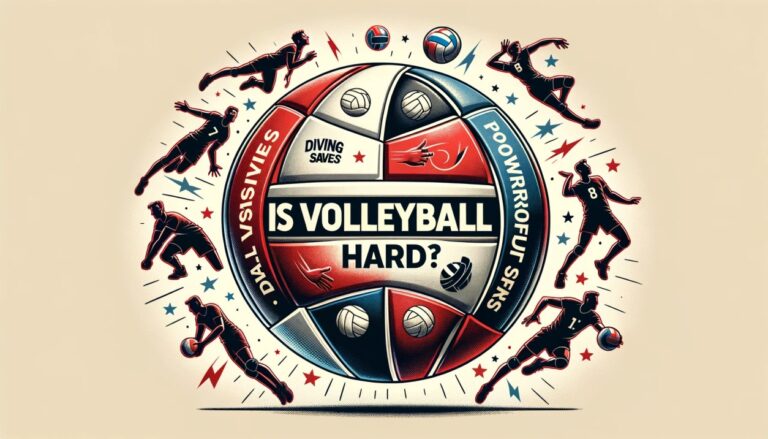Can You Use Your Leg in Volleyball
Introduction
In this article, complete information about whether can you use your leg in volleyball is given. Ever been in a volleyball game and seen someone make a wild save with their foot, only to hear a mix of cheers and jeers? I have, and it was a sight to behold! The player, in a desperate attempt to keep the ball in play, kicked it over the net.
The opposing team was so stunned; that they missed their return. This brings us to a hot topic in the volleyball community.
Can You Use Your Leg in Volleyball?
The Basic Rules of Volleyball
For those new to the sport, here’s a quick rundown:
- The primary objective is to send the ball over the net and land it in the opposing team’s court.
- Each team can touch the ball up to three times, but individual players can’t touch it consecutively.
- Typically, players use their hands and arms for serves, passes, sets, and spikes.
But nowhere in these basics does it mention the leg. So, what’s the deal?
The Leg Rule in Detail
According to the official volleyball rules:
- A player can use any part of their body to hit the ball, and yes, that includes the legs.
- The key is that the hit needs to be clean and not a catch or throw.
Historically, the use of legs in volleyball wasn’t as clear-cut. Earlier versions of the rules were more restrictive about which body parts could make contact with the ball. However, as the game evolved, so did the rules, allowing for more flexibility and creativity in play. So, next time you see someone using their foot or leg, know that they’re not just making a bold move—they’re also showcasing the sport’s rich history.

Comparing Sources
Upon examining the three provided links, here’s a brief analysis:
- Volleyexpert.com offers a comprehensive look into the rules, emphasizing that any part of the body, including the legs, can be used. However, it doesn’t delve into the strategic implications of this move.
- The sports.stackexchange.com post provides a straightforward answer, confirming the legality of leg use. Yet, it lacks depth on the historical evolution of this rule.
- Volley-pedia.com stands out by discussing the tactical advantages of leg use, but it misses out on potential risks and disadvantages.
Advantages of Using the Leg
- Defensive Plays and Unexpected Saves: A quick foot can be the difference between a lost point and a spectacular save, especially when the ball is too low or out of arm’s reach.
- Adding Unpredictability: Using your leg can throw off opponents, making your team’s moves less predictable and more dynamic.
Potential Disadvantages
- Risk of Injury: Especially for those unaccustomed, a wrong move can lead to strains or sprains.
- Less Control: The leg, especially the foot, offers less precision than the hands or arms, potentially leading to misdirected hits.
In Which Situations You May Want to Use Your Leg?
Your legs are not just for walking or running; they play a crucial role in various situations, especially in sports and self-defense. Here are some scenarios where the power and agility of your legs can be of paramount importance:
1. Defense
Using your legs in defense can be vital in many situations:
- Kickboxing or Martial Arts: In disciplines like Taekwondo or Muay Thai, legs are used for powerful kicks to fend off opponents.
- Self-defense: A well-placed kick can incapacitate an attacker, giving you time to escape or seek help.
- Blocking: In sports like soccer, players often use their legs to block shots or passes.
2. At the Net
In various sports, being at the net requires effective use of the legs:
- Tennis: Players use their legs to spring into action, volleying the ball back to their opponent or smashing it for a winning shot.
- Volleyball: Jumping to spike the ball or block an opponent’s shot is crucial, and this requires strong leg power.
- Badminton: Similar to tennis, players at the net need to be agile and quick, using their legs to reach and return shuttlecocks effectively.
3. The Chase
The chase in any context requires speed, agility, and endurance:
- Track and Field: Whether it’s sprinting in the 100m dash or enduring a marathon, your legs are your primary asset.
- Team Sports: In sports like soccer, basketball, or rugby, players often chase after the ball, requiring bursts of speed and agility.
- Wildlife Encounters: In some rare and dangerous situations, you might need to run from a wild animal. Having good leg strength and stamina can be a lifesaver.
FAQs
Is using the leg a common practice in professional volleyball?
While not the norm, it’s not uncommon to see professionals use their legs, especially in desperate defensive situations.
Are there any famous plays where a player used their leg?
Yes, several highlight reels feature players making incredible saves with their feet, especially in beach volleyball.
How do referees judge the use of legs during a match?
As long as the hit is clean and not a catch or throw, referees consider it a legal move.
How many times can we use the leg in volleyball?
There’s no specific limit on how many times you can use your leg.
Do coaches recommend using legs?
ome coaches might, but it’s not the preferred technique.
Conclusion
In the dynamic world of volleyball, using one’s leg is not just a last-resort move but a testament to the sport’s evolution and the players’ adaptability.
So, the next time you’re on the court, and the ball’s just out of arm’s reach, why not give it a little kick? Who knows, you might just kick start a new trend in your local league!






